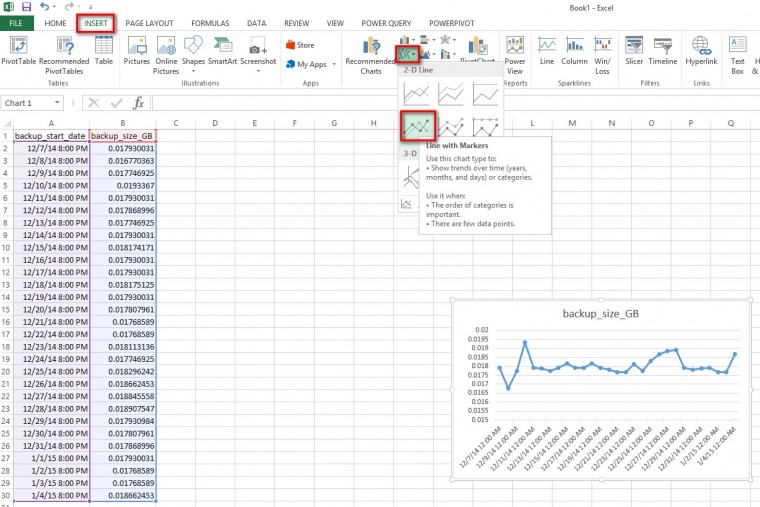More than a decade ago, I wrote a blog post about what I call the poor man’s SQL Server log shipping. In it, I outlined the process of how log shipping works. This became the basis of the chapter I wrote for the SQL Server MVP Deep Dives Volume 1 book. What’s interesting is that while […]
PostDelayed Durability in SQL Server 2014 and How You Can Take Advantage of It
There have been a lot of blog posts and articles written about the Delayed Durability feature in SQL Server 2014. Here are a couple of them to get you started. Delayed Durability in SQL Server 2014 by SQL Server MVP/Regional Director and SQLSkills CEO Paul Randal (blog | Twitter) Delayed Durability in SQL Server 2014 by […]
PostHow To Forecast Database Disk Capacity If You Don’t Have A Monitoring Tool

In a previous blog post, I mentioned why regularly shrinking your databases is not the right way to reclaim space. I also mentioned at the end of the blog post that the proper way to deal with database space issues is to monitor your disk space utilization and do proper capacity planning. That’s where tools like […]
PostRunning a SQL Server Failover Clustered Instance on Microsoft Azure
When I started working with virtual machines on Microsoft Azure last year, one of the first test that I did was to configure SQL Server Availability Groups in a hybrid configuration. The configuration consists of a failover clustered instance on production data center for local high availability and an Availability Group replica on Microsoft Azure […]
PostVideo: How To Simplify Installation and Configuration of a 2-node Multi-Subnet/Geographically Dispersed SQL Server (2012 and higher) Failover Clustered Instance
In a previous blog post, I’ve demonstrated how to install and configure a 2-node SQL Server 2012 failover clustered instance (FCI.) As a follow-up, below is a video on how to install and configure a multi-subnet/geographically dispersed SQL Server 2012 (and higher) FCI. When SQL Server 2012 introduced the support for multi-subnet clustering, there have been […]
PostSQL Server Encrypted Backups: Transparent Data Encryption or Backup Encryption
This particular question came up while I was delivering a workshop last week on the new features in SQL Server 2014. Since transparent data encryption has been available since SQL Server 2008, why would I still need the backup encryption feature? For one, transparent data encryption is an Enterprise Edition-only feature whereas backup encryption exists in […]
PostRegularly Treat Your Databases to a S.P.A.

“Today’s DBAs have responsibilities that go far beyond their traditional role of data custodian.” I was reading the infographic that Idera published about their accidental DBA survey results last week and wasn’t surprised at all by the results. I considered myself an accidental DBA when I was starting out in the industry and can […]
PostIn-Memory OLTP in SQL Server: Logging Comparison with Disk-Based Tables
In a previous blog post, I talked about Partition-Level Online Index Operations in SQL Server 2014 and how it affects high availability and disaster recovery. With more features being added in every new version of SQL Server, it’s important to understand how its implementation will affect your overall objectives. One feature that got a lot […]
PostFrom Backup Tape to Microsoft Azure
“Only wimps use tape backup: REAL men just upload their important stuff on ftp, and let the rest of the world mirror it” – Linus Torvalds – I really don’t have a clue whether that quote was intended as a joke or not but that’s beside the point. If you’ve worked in the IT industry for a […]
PostUsing the Cluster Preparation Checklist for Deploying SQL Server Failover Clustered Instances and Always On Availability Groups
Failing to plan is planning to fail Designing and deploying high availability solutions takes a lot of preparation and planning. Whenever I do presentations that involve demos of creating SQL Server failover clustered instances (FCIs) and Availability Groups (AGs,) I emphasize that while the demo only takes less than 20 minutes to complete, it takes […]
